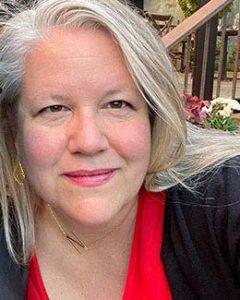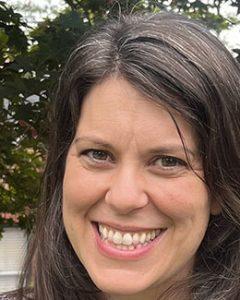FOCUS
Learning network shifts districts’ approach to summer programs
By Nancy Gannon and Sara Doughton
Categories: Change management, Data, System leadershipAugust 2024
Even in the best of times, significant education problems are rarely fixed with easy solutions, and 2021 was not the best of times. The COVID-19 Omicron variant was causing a new wave of infections and, because of school and life disruptions, students were struggling with learning loss and a decline in mental and emotional health.
Against this backdrop, FHI 360, an organization whose education initiatives aim to dismantle obstacles and give students the tools they need to succeed in school, designed and launched the District Summer Learning Network with funding from The Wallace Foundation. The network helps districts pivot in their approach to summer learning as a strategy to mitigate the pandemic’s worst impacts by igniting learning and improving student well-being.
Helping districts navigate the complex challenges of the pandemic required understanding two separate but related problem types. Technical problems have clear parameters and can be solved with existing expertise and solutions. Adaptive challenges call for new ways of thinking and acting and require changes in people, processes, and systems (Heifetz et al., 2009).
 In designing #HQPL, this network’s goal was to help districts shift their thinking re: summer learning and give them tools to create high-quality, evidence-based programs that benefit young people. https://bit.ly/3YWbxFT @fhi360 Share on X
In designing #HQPL, this network’s goal was to help districts shift their thinking re: summer learning and give them tools to create high-quality, evidence-based programs that benefit young people. https://bit.ly/3YWbxFT @fhi360 Share on X
The technical problems of rethinking summer learning programs included the need for districts to track new funding, comply with state and federal reporting requirements, and apply district policy checklists to program design and planning. The main adaptive problem was reframing the purpose and methods of summer programs.
District leaders realized the traditional summer school model rooted in remediation, often framed as the punitive result of failing classes, wouldn’t work. Students needed to re-engage in school and reconnect with one another and with adults in a positive environment that was responsive to their needs, including the need to learn material they missed because of the pandemic. Districts often had to rethink all aspects of their summer program, including whom they served, what their goal was, and what they taught.
To solve complex problems like this, it is important to invest in professional learning that can help educators learn and implement both technical and adaptive solutions and to design, test, and scale solutions that truly address the problem. This results in interventions that are more likely to be successful and sustained, and participants who are likely to be better equipped for the next complex challenge they encounter.
The District Summer Learning Network team has taken this investment seriously, blending technical and adaptive learning approaches to help leaders shift their approach to summer learning. Throughout, we have supported professional learning leaders to address the summer learning challenges and prepare to address future complex challenges that require shifting mindsets and systems.
The network has helped over 125 districts across the U.S. design and implement high-quality summer programs that accelerate learning and improve student well-being. In designing our model for professional learning, our goal was to help districts shift their thinking about what summer learning could be and give them tools to create high-quality, evidence-based programs that benefit young people.
Our model had to consider the challenges our district partners faced, such as competing priorities that made it hard to focus on summer programs, time constraints that limited districts’ ability to create meaningful professional learning for teachers, silos around key collaborators such as federal programs and curriculum teams, teacher and staff burnout, and operational challenges such as a lack of buses for summer programs.
We found the following elements critical for facilitating both technical solutions implementation and adaptive problem-solving in support of high-quality summer learning.
Start with a solid research base to inform both technical and adaptive professional learning.
The District Summer Learning Network’s theory of action draws heavily from Wallace’s National Summer Learning Project, which shows long-term benefits for students who participate in multiple years of summer programs that incorporate key program elements (McCombs et al., 2020; Schwartz et al., 2018).
Based on these findings, we designed the network model to promote four pillars of effective summer learning: academic quality, equity, community partnerships, and whole child development. We help districts operationalize these pillars by implementing the evidence-based practices that are most likely to produce positive outcomes for students.
The network model also leans on Elena Aguilar’s approach to coaching, which focuses on strong relationships between coach and coachee to shift behaviors and mindsets to achieve systemic change (Aguilar, 2013). This “transformational coaching approach” can help create an understanding that change is possible and open pathways to effect that change (see box on p. 35).
The District Summer Learning Network values social interaction and collaborative knowledge building to help leaders achieve lasting changes in mindsets and practice, informed by Vygotsky’s sociocultural theories of development (Eun, 2008). To that end, we hired coaches with significant experience, gave them space to build strong relationships, and provided regular time and space to reflect across the work.
The coaches leveraged their expertise in professional learning, curriculum and instruction, educational leadership, and out-of-school time learning. Coach preparation challenged them to work adaptively with their districts as they co-designed plans to achieve districts’ goals.
The network also regularly draws on the Stanford d.school’s Liberatory Design Principles to help participants center equity questions in their program reflection and design (Anaissie et al., 2021), with each learning session opening with a reminder of those principles.
Create multiple, supportive pathways for learning.
We knew teams needed space to both absorb new technical content and develop and adapt their thinking as they created better and more context-specific programs. Therefore, the District Summer Learning Network offers ample opportunities for inquiry, job-embedded learning, and reflection with teams and peers to understand what’s working and what needs to change. These include:
- Whole-group professional learning: A biweekly or monthly session for all member districts that includes current research, one or more districts sharing their model, and opportunities to socialize new learning with peers.
- Individual coaching: Four to eight hours a week where the district-designated lead (districts often designate the out-of-school time lead, a curriculum lead, or a summer lead if their district has one) can meet one-on-one or in small groups with a coach who works within that district’s context to rethink summer learning. Coaches might share technical resources, such as professional learning agendas or budget templates, while also working with districts to develop adaptive solutions as they navigate team dynamics and disagreements over summer learning goals.
- Small learning communities: Biweekly sessions or a short series where districts can opt in to a series of learning sessions focused on an array of high-needs topics, including multilingual learners, rural districts, literacy, etc.
- Internal learning sessions: Biweekly sessions where all coaches meet with FHI 360 staff to deepen understanding across the team around challenges, opportunities, successes, and struggles. Coaches also complete an extensive onboarding process and use their regular meetings to plan and reflect together on coaching practices focused on inquiry, change management, and adult learning.
These professional learning opportunities provide space for summer learning leaders to practice applying evidenced-based tools — some provided by The Wallace Foundation and some by FHI 360 — in a community of peers.
Apply a systems lens to problem-solving.
Before our member districts could engage in technical problem-solving to incorporate evidence-based summer learning practices — such as shifting to programs that run for at least six weeks and incorporate at least 90 minutes of math and English language arts per day — district leaders had to start with a deep dive into their current state and then move to the adaptive process of envisioning possibilities.
The District Summer Learning Network walks them through this process, using Peter Senge’s (2006) work on systems thinking and examining how the system structures and mental models they operate within are a product of their district’s history, context, and current work. Using a systems lens helps leaders look beyond initial assumptions to identify the root causes of the challenges they want to address, such as low student attendance and engagement, as well as mindsets adults may hold about student learning and the purpose of summer programs that work against inclusive, engaging, and enriching summer programs.
Network members are encouraged to use these reflection questions:
- Events: What just happened?
- Trend/patterns: What have we been seeing over time?
- System structure: How are the parts related? What influences the patterns?
- Mental models: What assumptions, beliefs, values, and models are held? How do they keep the system in place?
The answers are sometimes surprising. For example, one team used a tool that helps districts strategically plan summer learning-related communication to address what they thought was an information flow issue (FHI 360, 2022). As the team went deeper in its analysis, it identified the problem: Its communication strategy missed an important slice of its population. Members realized they needed to apply an equity lens to their messaging and communication channels.
Creating a systemwide map of the root problem lets districts design purposeful goals and holistic action plans to reach them, making space for effective implementation of technical solutions.
Support goal-driven planning and long-term thinking with opportunities to reflect and revise.
When districts feel stuck, multiyear visioning can help them understand what success looks like and set goals to achieve the desired end state. But we’ve found that it’s important to create a scaffold for change.
Some districts in our network initially tried to plan for too many shifts at once, creating a sense of overwhelm as they simultaneously attempted to tackle high-quality instruction, program expansions to better serve the students who were most impacted by COVID-19, new partner collaborations, and improvements to social-emotional learning components.
Working flexibly with a three-year road map allows us to support a comprehensive mission and vision process while also understanding the incremental steps needed to achieve those objectives. Coaches made clear that districts could leave spaces blank if they were not ready to tackle an area.
This year, we incorporated planning for an audacious goal — an ambitious, achievable objective that focuses on one change lever that could affect the whole system and strengthen the student learning environment. Audacious goals let districts develop action plans, test specific interventions to understand their impact, learn from the results, and reapply learning to new goals.
For summer 2024, some of our districts’ audacious goals included:
- Transforming their program narrative to create more excitement, buy-in, and interpersonal engagement among students, teachers, parents, and communities.
- Distributing summer learning leadership to bring collaborators from across the district into planning conversations from the outset and maximize resources.
- Designing an integrated middle and high school program that involves career and technical education, with opportunities for students to contribute to their community.
Prepare teams to measure, reflect, and act on learning.
Continuous improvement is essential in both technical and adaptive change efforts to understand what is working and where adjustments are needed. We understand continuous improvement as initially a technical solution, but making sense of the data and using that information to improve initiatives often incorporates adaptive moves.
In the District Summer Learning Network, coaches work with districts to understand: What did we do? How well did we do it? Is anyone better off? For some districts, this means expanding data collection beyond state or federal requirements to answer specific questions they have about their programs. For others, it means focusing data collection so they can dive into their findings, instead of gathering too much information to process.
Based on their continuous improvement data, districts can refine their planning process. In one district that used student focus groups as part of data collection, students repeatedly commented on the impact the summer learning climate had on them, saying they wished they had powerful relationships during the school year like they did during the summer. That prompted the district to continue to prioritize site climate in summer and explore how to replicate those relationships during the year.
The results
As we wrap up our third year, over 90% of District Summer Learning Network districts are on track to submit their three-year road map for summer transformation, and districts’ engagement and satisfaction rates with the network consistently track upward of 98%.
More importantly, members keep telling us how the network has helped shift their thinking and how they are implementing engaging, enriching summer programs that produce tangible results for students.
With federal funding for summer learning coming to an end, they are exploring new funding avenues, building community partnerships, and designing creative staffing plans to continue providing high-quality programs. Some are even collaborating with peer districts to synthesize program data and document successes to make the case for funding summer learning.
Whether they are continuing to refine their summer learning approach or considering how to pivot in other areas, districts will face complex challenges that require a blend of technical and adaptive responses. The District Summer Learning Network model offers a blueprint for addressing these challenges through a unique job-embedded professional learning plan that allows educators space to create meaningful solutions to their toughest problems and to support students in an extraordinary moment in time.
References
Aguilar, E. (2013). The art of coaching. Wiley.
Anaissie, T., Cary, V., Clifford, D., Malarkey, T., & Wise, S. (2021). Liberatory design. www.liberatorydesign.com
Eun, B. (2018). Adopting a stance: Bandura and Vygotsky on professional development. Research in Education, 105(1), 74-88.
FHI 360. (2022). Summer learning communications plan. dslnhub.wpengine.com/wp-content/uploads/2023/09/resource-dsln-summer-learning-communications-plan.pdf
Heifetz, R.A., Grashow, A., & Linsky, M. (2009). The practice of adaptive leadership. Harvard Business Press.
McCombs, J.S., Augustine, C.H., Pane, J.F., & Schweig, J. (2020). Every summer counts: A longitudinal analysis of outcomes from the National Summer Learning Project. RAND Corporation.
Schwartz, H.L., McCombs, J.S., Augustine, C.H., & Leschitz, J.T. (2018). Getting to work on summer learning: Recommended practices for success (2nd ed.). RAND Corporation.
Senge, P.M. (2006). The fifth discipline. Doubleday.
Categories: Change management, Data, System leadership
Recent Issues
LEARNING DESIGNS
February 2025
How we learn influences what we learn. This issue shares essential...
BUILDING BRIDGES
December 2024
Students benefit when educators bridge the continuum of professional...
CURRICULUM-BASED PROFESSIONAL LEARNING
October 2024
High-quality curriculum requires skilled educators to put it into...
LEARNING TO PIVOT
August 2024
Sometimes new information and situations call for major change. This issue...














